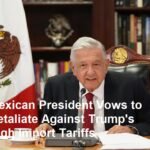Argentina’s newly elected president, Javier Milei, has unveiled an ambitious economic plan aimed at pulling the country out of its deep economic crisis. With inflation soaring, unemployment rising, and poverty levels at record highs, Milei’s administration has set out to implement a series of drastic measures to stabilize and revitalize the economy. These reforms are bold and controversial, drawing both support and criticism from various sectors of society.
One of the central pillars of Milei’s economic strategy is his aggressive approach to tackling Argentina’s crippling inflation, which reached over 130% in 2023. To address this, Milei has proposed the dollarization of Argentina’s economy. This radical plan involves replacing the Argentine peso with the US dollar as the official currency. Proponents argue that dollarization would help eliminate inflation by stabilizing the currency and restoring confidence in the financial system, as the country has suffered from the devaluation of the peso for years.
Milei believes that dollarization will create a more predictable economic environment, attract foreign investment, and make Argentina more competitive globally. By adopting the US dollar, Argentina would effectively tie its monetary policy to the Federal Reserve, which is seen as more stable than the Argentine central bank, often criticized for its failure to curb inflation.
However, this proposal has been met with skepticism and concern. Critics argue that dollarization could lead to the loss of monetary sovereignty, meaning that Argentina would no longer have the ability to control its own money supply or adjust interest rates to suit its needs. Furthermore, many question the feasibility of such a drastic move, given that Argentina would need significant foreign reserves to make the transition and ensure economic stability. Additionally, experts warn that the process could lead to increased inequality, as the country’s poorest citizens would face rising costs without the ability to rely on local monetary policies to protect their purchasing power.
In addition to dollarization, Milei has announced a comprehensive plan to reduce public spending. Argentina’s government has long struggled with fiscal deficits, and Milei’s administration intends to cut subsidies, especially in energy and transportation, which have burdened the national budget. The president has also promised to reduce the size of the public sector, particularly by cutting government jobs, as part of a broader effort to lower government expenditures.
Milei’s fiscal austerity measures are aimed at restoring investor confidence and reducing the country’s public debt, which has ballooned in recent years. His administration has proposed reducing Argentina’s budget deficit by 5% of GDP in its first year, a target that will require deep cuts in public spending. The goal is to reduce Argentina’s reliance on international loans and achieve fiscal sustainability, which is essential for long-term economic growth.
However, these austerity measures have raised concerns among Argentina’s social sectors. Critics fear that cutting subsidies and reducing public sector jobs will worsen poverty and inequality, particularly for vulnerable communities who rely on government support. Labor unions and social movements have expressed strong opposition to the president’s proposed cuts, warning that they could lead to widespread protests and unrest.
On the trade front, Milei has indicated that his government will prioritize opening up Argentina’s economy to foreign markets. One of his main goals is to reduce trade barriers and eliminate tariffs that have traditionally protected local industries but also isolated Argentina from global supply chains. By liberalizing trade, Milei hopes to stimulate competition, attract foreign investment, and improve Argentina’s export capabilities, particularly in agriculture and commodities.
Milei’s government has also promised to focus on structural reforms to encourage entrepreneurship and innovation. His administration plans to reduce bureaucratic red tape, cut taxes on businesses, and simplify regulations to make it easier for companies to operate in Argentina. These reforms aim to create a more business-friendly environment and attract both local and international investors who have been wary of the country’s volatile economic conditions in recent years.
Despite the bold nature of these reforms, many experts are uncertain about whether Milei’s plan will succeed in the long term. Argentina’s economic challenges are deeply entrenched, and many believe that the president’s proposals, while ambitious, may not be enough to reverse years of economic mismanagement. Moreover, the public’s reaction to the austerity measures and the potential social unrest that could follow remains a significant concern.
Milei’s government faces a delicate balancing act: implementing tough economic reforms while maintaining social stability. If he is able to successfully navigate this challenge, he could set Argentina on a path toward long-term growth and stability. However, if the measures fail to deliver results or exacerbate social tensions, Milei’s presidency could be defined by economic hardship and political strife.
In conclusion, President Javier Milei’s economic strategy is a bold and controversial attempt to address Argentina’s long-standing economic problems. By focusing on dollarization, reducing public spending, and liberalizing trade, Milei hopes to restore Argentina’s economic stability and growth. However, the success of these measures will depend on the ability of his administration to manage the social and political ramifications of such drastic reforms, as well as the broader global economic conditions that will affect Argentina’s recovery.
President Milei’s Plan to Revive Argentina’s Economy

Leave a comment












